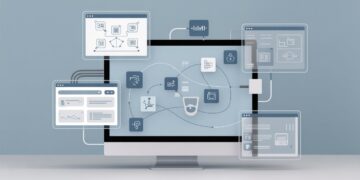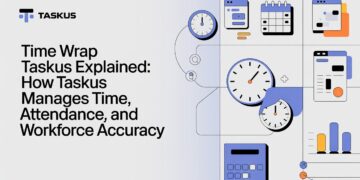Onboarding Process
A solid onboarding process is critical to your company’s success since it creates a great image and ensures employee happiness, retention, and productivity. Recognizing that the onboarding process begins when you make a job offer to a candidate is essential.
On the other hand, a proper onboarding procedure can be time-consuming and labor-intensive for your human resource personnel, especially if done manually. It takes time and requires a large quantity of paperwork and administration.
To be effective in onboarding, your HR staff must go digital by embracing technology that facilitates process automation. This post will discuss how to digitalize the onboarding process and its advantages. Let’s get started.
What are the ways to automate the onboarding process in your company?
Here are some methods for automating the employee onboarding process so that you may devote more time to other essential concerns in your organization.
Get the paperwork out of the way.
Consider utilizing a paperless solution to make the onboarding process faster and simpler for your new workers by saving time spent filling out forms, not just for efficiency but also to help the environment.
You can accomplish this by utilizing business process management software or an online form builder, which allows your organization to easily create online forms. Recruits can then complete their applications form online on their first day of work or even before it begins.
Allow everyone participating in the process easy access.
The software you use must give a centralized location for everyone to access and accomplish the tasks. This is especially important if your organization works worldwide or has various divisions scattered across the region.
Begin your recruiting process by launching an email thread to allow team members to interact and offer room for input if necessary.
The same applies to a career development program, where third-party entities need access to some of the company’s files and communicate with the assigned HR representative.
Use the majority of your data regardless of where it is stored.
To ensure the success of your automation process, link several systems such as active directory, SAP, or any other method used in your business. Connecting all these data sources in a single workflow will streamline the entire process, regardless of where they are on-premises.
Make your inductions paperless.
The induction and training sessions usually take a long time during the hiring process, and every employee needs basic training on corporate policies and procedures. During this session, the HR manager must document each employee’s policies and procedures, which takes significant time and paperwork.
However, you may begin by digitizing these documents, recording each employee’s reading, and seeking their digital signature. All of these will assist you in becoming paperless and expediting the process.
Think about the long term.
A successful onboarding process should be ongoing, requiring your attention to modifications of current employee positions. Later on, to save further on labor, the software solution you choose should be able to react to changes in your business dynamic.
What are the benefits of streamlining the onboarding process?
Here are some of the primary advantages of an efficient onboarding procedure:
Improves employee satisfaction
Since the onboarding process centers on the needs of the workers, it focuses on building appropriate skills for each employee, making work more superficial, and making employees feel fulfilled while completing their jobs.
Improves performance.
The training session targets duties that workers regularly perform throughout the onboarding process. It focuses on the knowledge base, skills, abilities, and motivation essential for particular roles, resulting in improved individual performance.
Reduced turnover rate.
A robust onboarding process allows employees to become more productive and happy rather than seeking a new job as soon as they receive the necessary professional growth. It increases job happiness and motivation, making employees want to stay.
Conclusion.
With the changing corporate climate, particularly with the growth of technology, it is becoming increasingly difficult to expect new hires to possess all the necessary skills and expertise. On the other hand, maintaining a dynamic onboarding program will go a long way toward preventing future performance disparities in your team.

















